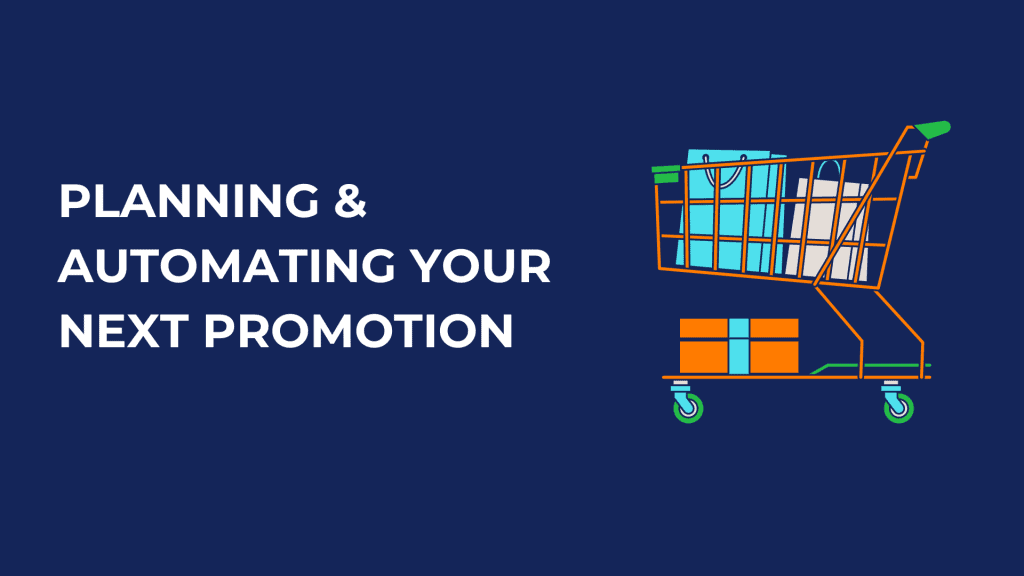Promotions are indispensable tools for retailer and e-tailers in driving sales, increasing brand visibility, and fostering customer loyalty. However, executing a promotion that not only meets but exceeds your objectives requires careful planning, strategic implementation, and efficient execution. In this post, we’ll explore how to automate and optimize your next promotion for maximum impact and efficiency.
What is a Promotion?
A promotion is a marketing tactic designed to stimulate customer interest and encourage purchases. It typically involves offering discounts, incentives, or other perks to incentivize consumers to make a purchase. Promotions can take various forms, including sales, discounts, coupons, bundled offers, limited-time offers, and more.
Objectives of a Promotion
The objectives of a promotion can vary depending on the goals of the retailer. Some common objectives include:
- Increasing sales volume
- Clearing excess inventory
- Attracting new customers
- Retaining existing customers
- Boosting brand awareness and visibility
- Encouraging repeat purchases
Planning Your Promotion
At the heart of every successful strategy lies meticulous planning. When planning a promotion, there are a multitude of things you need to do and remember.
- Set Clear Goals: Define what you want to achieve with your promotion like discussed earlier. Whether it’s driving sales, clearing out old inventory, or acquiring new customers, having clear objectives will guide your strategy.
- Know Your Audience: Understand your target audience’s preferences, buying behavior, and demographics. Tailor your promotion to resonate with their needs and interests. Ensuring customer satisfactions is crucial, so remember to prioritize customer experience throughout the promotional campaign, from browsing and purchasing to post-sale support.
- Select Products Wisely: This is an important step. Make sure the list of products you choose for your promotion is not cannibalised with other products in your catalogue (for instance, avoid cannibalization of a 1kg product by an aggressive promotion on the 500g version of the product). Focus on high-margin items, slow-moving inventory, or new arrivals to maximize ROI.
- Choose the Right Promotion Type: Select a promotion type that aligns with your objectives and target audience. Whether it’s a percentage discount, buy-one-get-one offer, or free shipping, ensure it provides value to your customers.
- Selecting the Points of Sale: Determine the appropriate channels or platforms for your promotion (e.g., online store, physical retail locations, third-party marketplaces). You may, or may not want to offer the promotion on all of your sales channels.
- Anticipate demand: Have contingency plans in place to address potential supply chain disruptions or unexpected spikes in demand.
How to make this all efficient through automation?
Automating aspects of promotion planning can significantly streamline the process and enhance its effectiveness.
Firstly, when it comes to selecting products for promotion, AI pricing software can play a pivotal role in analyzing sales data and identifying patterns to determine which items are slow-moving or have untapped potential. This not only helps prevent cannibalization within your product catalog but also ensures that promotional efforts are focused on items that will yield the highest return on investment. If you’re interested by this, read more on Sniffie’s AI insights here.
Similarly, AI can assist in choosing the right discount percentage by utilizing predictive analytics to forecast various scenarios and determine the most effective discount.
Furthermore, AI-powered demand forecasting can enable retail businesses to anticipate fluctuations in demand and proactively adjust their promotion strategies accordingly. By analyzing factors such as seasonality, market trends, and external influences, AI algorithms can accurately predict future demand levels, allowing companies to allocate resources more effectively and ensure sufficient inventory levels to meet customer needs.
Implementation and Marketing
Now that you’ve planned which products to promote, where and by how much, it’s time to turn your campaign on. Let’s see what you need to ensure next:
- Pause existing strategy: If you’re already using pricing software, turn off any existing price optimization that your selected products are in, so that the price changes of the strategy will not affect the selected list.
- Craft Compelling Messaging: Develop engaging and persuasive marketing content to promote your promotion. Utilize email marketing, social media, website banners, and other channels to reach your target audience effectively.
- Segment Your Audience: Divide your customer base into segments based on demographics, purchase history, or behavior. Tailor your marketing messages and offers to each segment for personalized engagement.
- Schedule Campaigns Automatically: Schedule your price changes and marketing campaigns in advance using automation tools. This saves time and ensures timely execution without manual intervention.
Reminder: The EU’s Omnibus Directive requires you to show the 30-day lowest price of any item prior to its discount. Make sure you clearly state this prior price on your product pages when promoting products.
Maximize your campaign profits
Use AI insights to pinpoint the perfect discount percentage, crafting discounts in mere minutes without the hassle of manual calculations. Seamlessly execute flash sales and scheduled discounts, all while receiving real-time forecasts on revenue, volume, and profit, streamlining your discount planning process.




